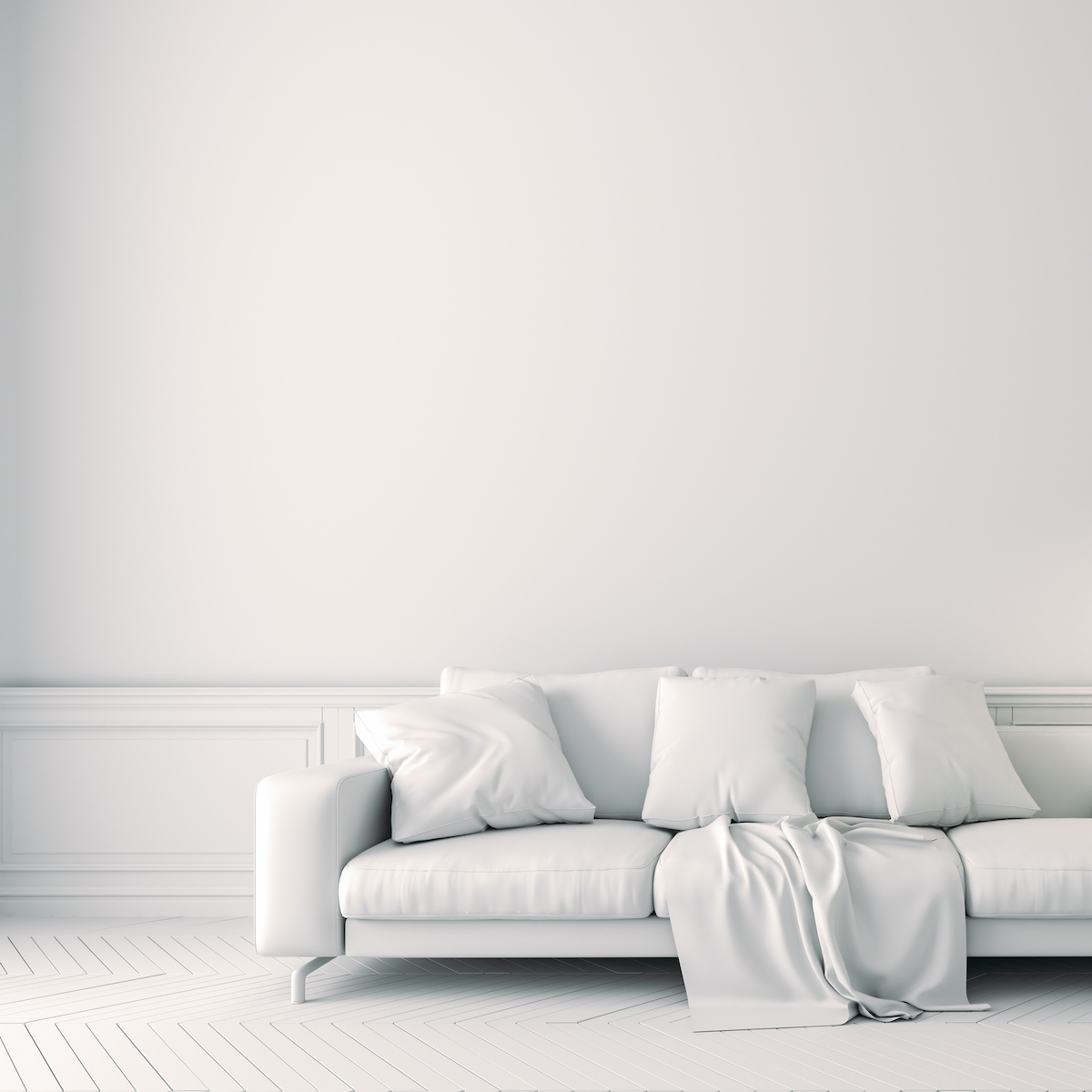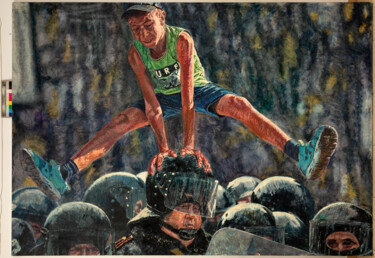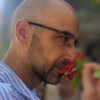


Let us know if you would like to see more photos of this artwork!
- Back of the work / Side of the work
- Details / Signature / Artwork's surface or texture
- Artwork in situation, Other...
I Don't Jump On Command, I Command The Jump (2025) Painting by Anton Terziev
More info
- Packaging (Box or cardboard packaging) All artworks are shipped with a premium carrier, carefully protected and insured.
- Tracking Order tracking until the parcel is delivered to the buyer. A tracking number will be provided so that you can follow the parcel in real-time.
- Delay Worldwide delivery in 3 to 7 days (Estimate)
- Customs not included The price does not include customs fees. Most countries have no import tax for original artworks, but you may have to pay the reduced VAT. Customs fees (if any) are to be calculated on arrival by the customs office and will be billed separately by the carrier.
More info
- Trackable Online Certificate of Authenticity Authenticity Certificates can be verified online at any moment by scanning the artwork code.
- Artist Value Certification Experts study the work and career of an artist then establish an independent and reliable average price value. The average price value situates the artist on a price range for a given period. The experts may also be asked to establish a more precise estimate for a particular work.
More info
100% secure payment with SSL certificate + 3D Secure.
More info
Purchase a license to use this image for your website, communications or to sell merchandise.
Usage: Web Licence
| 1030 px | ||

|
1500 px |
| Dimensions of the file (px) | 1030x1500 |
| Use worldwide | Yes |
| Use on multi-support | Yes |
| Use on any type of media | Yes |
| Right of reselling | No |
| Max number of prints | 0 (Zero) |
| Products intended for sale | No |
Download immediately upon purchase
This image is available for download with a licence: you can download them at anytime.
Restrictions
All images on ArtMajeur are original works of art created by artists, all rights are strictly reserved. The acquisition of a license gives the right to use or exploit the image under the terms of the license. It is possible to make minor modifications such as reframing, or refocusing the image so that it fits perfectly to a project, however, it is forbidden to make any modification that would be likely to harm the original work In its integrity (modification of shapes, distortions, cutting, change of colors, addition of elements etc ...), unless a written authorization is obtained beforehand from the artist.
Custom licences
If your usage is not covered by our standard licences, please contact us for a custom licence.
Art image bank-
Original Artwork (One Of A Kind)
Painting,
Oil
on Canvas
- Dimensions Height 57.1in, Width 76.8in
- Framing This artwork is not framed
- Categories Paintings under $20,000 Figurative Politics
The painting’s focal point is a youthful figure leaping over a heavily armored officer. The choice to place this figure mid-action—hands pressing atop the helmet—lends the painting a kinetic energy. Terziev halts a fleeting instant, reminiscent of photojournalistic “freeze-frames,” yet renders it in a painterly style. This tension between photo-like immediacy and the expressiveness of oil paint gives the scene both documentary clarity and a certain timelessness.
The tight framing around the main subjects emphasizes the confrontation. In the background, a phalanx of similarly clad officers recedes into an indistinct crowd, hinting at a broader social or political apparatus. The dynamic pose of the young figure—legs extended, arms bearing weight—cuts diagonally across the canvas, drawing the viewer’s eye from the figure’s face to the helmet below. This diagonal thrust is a compositional technique often employed to heighten drama, recalling, for instance, the angled bodies in Eugène Delacroix’s “Liberty Leading the People.” Terziev appears to favor a saturated palette: the vivid greens of the protester’s shirt and the deep blacks of the riot gear contrast sharply. The background’s muddled, smoky hues evoke tension and turmoil. Despite this gloom, the central figure seems illuminated—whether literally or symbolically—standing out against the massed uniforms. This painterly contrast underscores a classic artistic trope: the individual’s bright presence opposing a darker, more uniform collective force.
At first glance, the painting comments on the power dynamic between state authority (the officer in riot gear) and the individual (the agile figure vaulting over him). The act of physically leaping above the officer’s head becomes a metaphor for transcending imposed limits or commands. It suggests a reversal of typical power structures: the officer, usually the figure of control, is relegated to a support—albeit involuntarily.
The subject’s youthful appearance adds another layer of resonance. Depicting a young individual in direct, physical interaction with law enforcement draws upon an established tradition of protest imagery, where youth movements have historically galvanized political change. This generational tension recalls iconic photographs from the 20th and 21st centuries, in which young protesters often become the faces of revolution or societal critique.
The painting also alludes to the idea of the human body as a site of protest. The choice to vault, rather than to push or to attack, speaks to a form of resistance that is acrobatic, creative, and emblematic of personal freedom. It contrasts with the rigid, disciplined body language of the officers. In this sense, the work resonates with a lineage of politically charged performance art and photography, wherein gestures of dance or athleticism become statements of defiance.
While Terziev’s style is distinct from the Romantic or Baroque, the thematic of state power versus individual vulnerability recalls Francisco Goya’s **“The Third of May 1808.”** There, too, we see a focus on the human cost of political strife. Goya’s unflinching look at violence resonates in Terziev’s more contemporary depiction of confrontation, even if the latter is less about overt bloodshed and more about tension and symbolic subversion.
More directly, the painting aligns with 20th- and 21st-century traditions of politically engaged art—think of works by artists such as Banksy or Ai Weiwei, who fuse bold imagery with pointed social critique. Terziev’s piece, however, remains firmly in the realm of painting, bringing to mind large-scale compositions that historically served as calls to action or documentation of collective struggle.
Although the painting captures a realistic moment, the brushwork seems deliberately visible—especially in the musculature of the figure and the textured rendering of the riot gear. This blend of realism and expressionistic brush handling imparts an emotive quality. The painting avoids the polished sheen of hyperrealism, instead embracing a slightly raw surface that mirrors the rawness of civil strife.
As a large-scale work, the painting presumably envelops the viewer, magnifying the tension between protester and authority. Large canvases historically lend a monumental aura to their subject matter—an effect that can transform a single leap into a sweeping allegory of societal power struggles.
I Don’t Jump On Command, I Command the Jump” stands as a compelling example of contemporary political painting. Through a vividly captured, acrobatic gesture of defiance, Anton Terziev provokes reflection on youth, power, and the state’s response to public dissent. The painting’s dynamic composition, saturated color contrasts, and expressive brushwork imbue it with a timeless urgency. In art historical terms, it joins a lineage of works that memorialize moments of societal upheaval—echoing both the immediacy of photojournalism and the grandeur of historical painting.
By framing the tension between the individual and the forces of authority in a single, frozen leap, Terziev not only documents a poignant political instant but also suggests the broader, universal spirit of protest that transcends geographic and temporal boundaries. The painting thus resonates as a contemporary emblem of resilience—both a snapshot of a specific socio-political climate and a more enduring symbol of the human impulse to rise above constraints.
Related themes
Anton Terziev, a contemporary Bulgarian artist, is a master of using sharp irony as his artistic tool to engage with various contemporary subjects. His works are characterized by a profound use of iconography that conveys a stark and critical imagery. In his artistic repertoire, Anton skillfully weaves together elements of stakes, skills, and storytelling, resulting in figurative contemporary art that carries a fine touch of social commentary, humor, and messages about the artist's condition.
Anton Terziev draws inspiration from two distinct sources. Firstly, his art is often born from real-life occurrences, unfolding around him in a way that sparks his creative process. Secondly, his imagination plays a pivotal role in his work, allowing him to craft vivid and thought-provoking imagery. Each of his creations is garnished with subtle elements of pop culture, extracted from movies and books. Embedded within every piece is a narrative, a metatext that enriches the viewer's experience without overwhelming them, for Anton believes that good art communicates softly but effectively.
What distinguishes Anton's work is his unwavering commitment to leaving his audience with a sense of open-ended wonder. His pieces invite viewers to engage in a dialogue with the art, encouraging them to interpret, question, and explore the narratives he presents. Choosing the perfect title for his works is a challenge that he often tackles by drawing inspiration from literature, cinema, or music.
Anton Terziev's career as a painter is intricately intertwined with his identity as a writer. His ideas take shape in the form of paintings and art objects, reflecting his diverse talents. Beyond painting, he brings his artistic vision to life through performances, filmmaking, and design, demonstrating a multifaceted approach to creative expression.
-
Nationality:
BULGARIA

- Date of birth : 1977
- Artistic domains: Works by professional artists,
- Groups: Professional Artist Contemporary Bulgarian Artists







